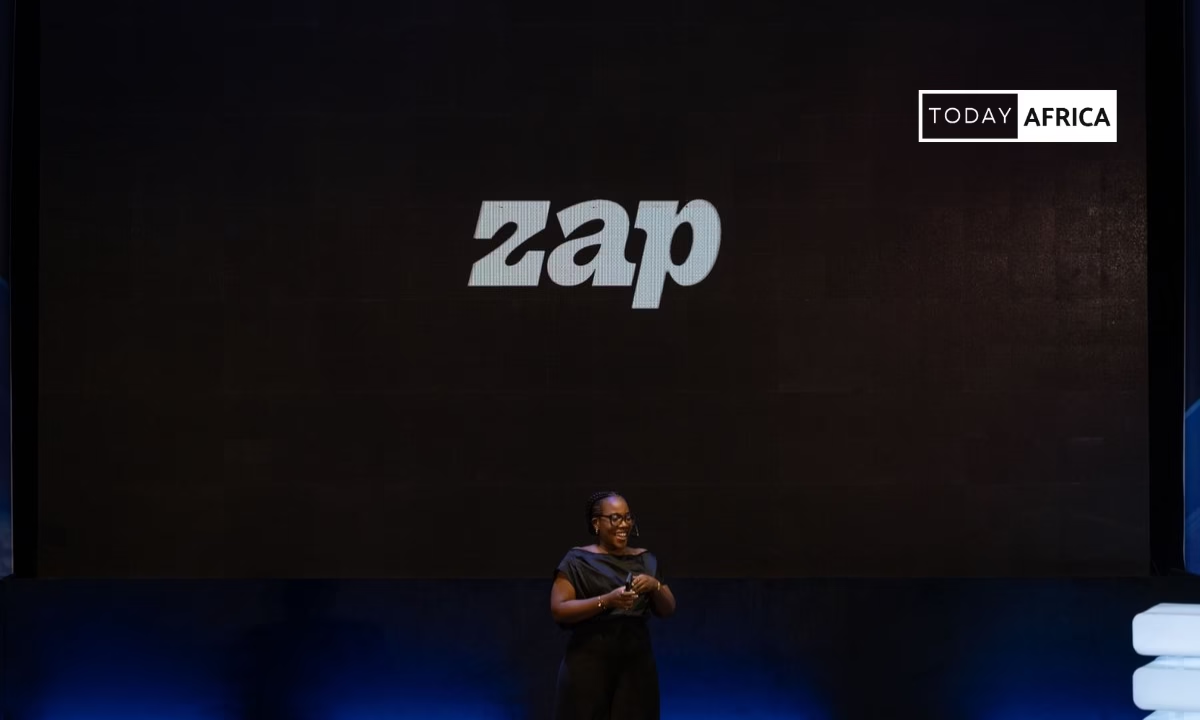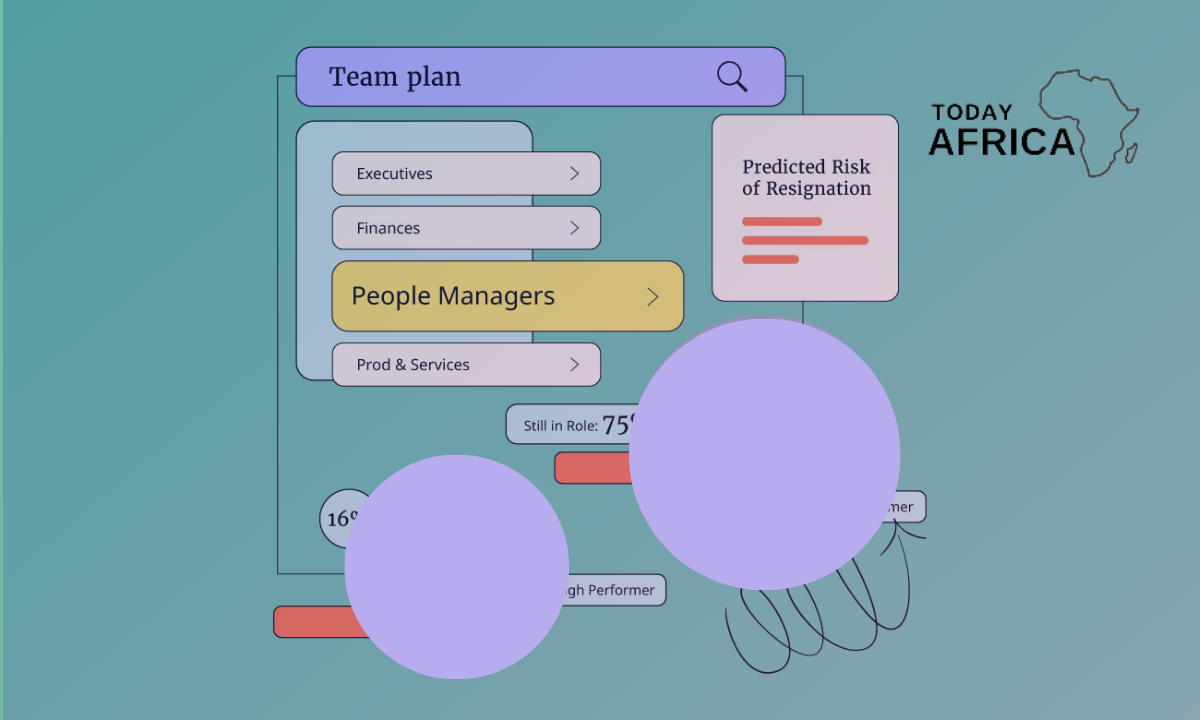A business line of credit for startup without revenue is a flexible funding option designed to support companies when cash flow is tight.
Even if your startup has not yet generated revenue, this financial tool can bridge the gap and empower you to invest in critical growth areas such as marketing, equipment purchases, or even hiring.
Moreover, leveraging a credit line responsibly can also help build your company’s financial reputation and set the stage for higher revenue for a startup later on.
In this article, we will discuss business line of credit for startup without revenue, how it works, and what lenders are looking for—even if you haven’t generated revenue yet—and how to use this funding to eventually boost revenue.
What is a Business Line of Credit?
A business line of credit is a revolving credit facility that provides your company with access to a predetermined amount of funds.
Unlike a traditional loan that offers a lump sum, a credit line lets you withdraw money as needed—up to your limit—and only charges interest on the amount you use. Think of it as a high‑limit credit card for your business. This flexibility is particularly appealing for startups that must manage unpredictable cash flows.
For example, if your startup has a $50,000 credit limit, you may only borrow $10,000 to cover a short‑term expense and only pay interest on that amount. As you repay the borrowed sum, the credit becomes available again, much like a revolving line of credit available on a continuous basis.
How does it work?
- Revolving nature: Funds can be borrowed, repaid, and then borrowed again without reapplying.
- Interest charges: Interest is charged solely on the amount drawn, not the full credit limit.
- Flexible withdrawals: You can tap into the credit line as opportunities or emergencies arise.
- Repayment terms: Typically, repayment options are structured to accommodate fluctuations in cash flow, with options like interest‑only payments during early periods.
Why it’s ideal for startups
For startups—even those without revenue—a business line of credit offers a flexible financial cushion that can be used to cover essential expenses during lean months. It gives you time to fine‑tune your revenue model and business operations without being paralyzed by cash shortages.
Read Also: 10 Startup Mistakes to Avoid Before You Launch
Challenges for Startups Without Revenue

1. High perceived risk
Lenders typically assess the risk associated with providing credit. When a startup has no revenue, lenders see it as a higher risk because there is no proven income stream to repay the borrowed funds.
- Creditworthiness: Without revenue, lenders often focus more on the entrepreneur’s personal credit history.
- Collateral: Some lenders may require collateral if there’s no revenue to serve as proof of future repayment.
- Business plan: A robust and realistic business plan that projects future revenue becomes essential to mitigate the perceived risk.
2. Importance of forecasting revenue for a startup
Even if you haven’t generated revenue yet, you must have a clear projection of how you will build revenue for a startup. Investors and lenders want to see detailed financial forecasts that outline when and how you expect to generate income.
- Financial projections: Include realistic milestones for customer acquisition, sales growth, and revenue generation.
- Proof of concept: Demonstrate that there is market demand for your product or service, even if early sales are minimal.
- Market research: Use data to support your revenue assumptions; this is critical to convincing lenders to take a chance on you.
By providing solid revenue forecasts, you can show that while you’re currently pre‑revenue, your startup has a viable path to profitability.
How to Qualify for a Business Line of Credit Without Revenue
Securing a business line of credit when your company has not generated revenue requires meeting certain criteria and demonstrating potential. Here are the key strategies to improve your chances:
1. Build a strong personal credit history
Since your business might lack revenue, lenders will often rely on your personal credit score. A good personal credit score (generally 680 or above) is a major factor in qualifying for credit.
Action steps:
- Review your credit report and address any inaccuracies.
- Pay down existing debts and keep your credit utilization low.
- Avoid new credit inquiries before applying for a credit line.
2. Develop a robust business plan
Your business plan is your chance to convince lenders that your startup has a clear path to revenue. Include:
- Market analysis: Show that there is demand for your product.
- Revenue projections: Even if you’re pre‑revenue, forecast how and when you will generate income.
- Use of funds: Clearly outline how the funds will be used to achieve growth milestones.
- Competitive advantage: Explain what makes your business unique and why it will succeed.
3. Provide proof of concept and early traction
Even minimal early sales, user sign-ups, or strategic partnerships can bolster your application.
- Testimonials and case studies: Gather early customer feedback or pilot results.
- Letters of intent: Secure commitments from potential customers to buy your product or service once launched.
- Product demos: Showcase prototypes or beta versions that prove your concept works.
4. Offer collateral or a personal guarantee
If possible, be prepared to offer collateral (such as equipment or personal assets) or agree to a personal guarantee. This can reduce the lender’s risk.
- Collateral options: Evaluate any business assets—even intellectual property can sometimes be used as collateral.
- Personal guarantee: Understand that this means you are personally liable if the business cannot repay the credit line.
5. Choose lenders that understand startups
Some financial institutions specialize in providing credit to startups with little or no revenue. These lenders look beyond current sales figures and evaluate potential.
- Alternative lenders: Platforms like Swoop Funding and Brex offer business lines of credit with flexible documentation requirements and tailored criteria for startups.
- Community banks and credit unions: These institutions might offer more personalized underwriting criteria compared to large national banks.
Read Also: 10 Startup Investment Mistakes to Avoid
How a Business Line of Credit Can Help Your Startup Grow
A business line of credit can serve as the catalyst for turning a pre‑revenue startup into a revenue‑generating enterprise. Here’s how:

1. Bridging the cash flow gap
When you’re not generating revenue, cash flow can become a major constraint. A credit line provides immediate working capital to cover day‑to‑day expenses such as payroll, rent, and inventory purchases. This ensures that your operations can continue smoothly until you start generating revenue.
2. Funding marketing and growth initiatives
Investing in marketing, customer acquisition, and product development is critical for building revenue for a startup. A business line of credit gives you the flexibility to seize these opportunities without waiting for revenue to roll in.
- Marketing campaigns: Use funds to launch targeted advertising, attend trade shows, or invest in digital marketing.
- Product development: Improve your product based on customer feedback, making it more competitive in the market.
3. Building business credit and a positive financial history
Responsible use of a business line of credit can help your startup build a positive credit history. Timely repayments and careful management not only reduce risk in the eyes of lenders but also position your startup for better financing terms in the future.
- Credit reporting: Many lenders report business credit activity to credit bureaus, which helps establish your company’s creditworthiness over time.
4. Enhancing operational flexibility
A revolving credit facility allows you to borrow funds as needed. This is particularly beneficial in a startup environment where the timing and amount of expenses can be unpredictable. You can adjust your borrowing based on current needs without the pressure of a fixed repayment schedule on a lump sum.
- Cash flow management: Only pay interest on what you use, and repay the funds as soon as your revenue begins to flow in.
- Operational agility: Quickly address unforeseen expenses or opportunities that arise without disrupting your business operations.
Ultimately, leveraging a business line of credit effectively can help you transition from a pre‑revenue stage to one where revenue for a startup starts growing consistently.
Types of Business Lines of Credit for Startups
Different types of credit lines offer varying benefits, and understanding your options will help you choose the one that best fits your startup’s needs.
1. Secured business line of credit
A secured credit line requires collateral—this could be physical assets or, in some cases, intellectual property. In exchange, secured lines often have lower interest rates.
Pros:
- Lower interest rates
- Higher credit limits
Cons:
- Risk of losing the collateral if you default
- May require more extensive documentation
2. Unsecured business line of credit
An unsecured credit line does not require collateral. Instead, lenders rely on your personal and business credit history, as well as your business plan and projections.
Pros:
- No risk of asset seizure
- Faster application process with fewer documents required
Cons:
- Higher interest rates compared to secured options
- Lower credit limits may be offered initially
3. Revolving vs. non-revolving lines
- Revolving line of credit: As mentioned earlier, funds can be withdrawn, repaid, and then re‑borrowed. This is ideal for managing recurring expenses and cash flow gaps.
- Non-revolving credit: You receive a lump sum, and once repaid, the line is closed. This might be used for one‑time expenditures or capital investments.
Each type has its own advantages depending on the specific cash flow needs of your startup. For early‑stage companies, unsecured revolving lines are often preferred because they require less documentation and offer the flexibility that startups need as they work toward generating revenue.
Read Also: Late Stage Tech Startups Revenues: Strategies, Models, and Growth Metrics
Pros and Cons of Using a Business Line of Credit

Pros of using a business line of credit
- Flexibility: Draw funds as needed and only pay interest on the amount you use.
- Immediate access to cash: Provides an essential lifeline during periods when revenue is not yet flowing.
- Builds credit: Responsible use can help establish and improve your business’s credit score.
- Support for growth initiatives: Enables investment in marketing, technology, and talent before revenue starts to pick up.
- Risk Mitigation: With a strong business plan and revenue projections, lenders may be willing to overlook the lack of current revenue.
Cons of using a business line of credit
- Higher interest rates: Especially with unsecured lines, interest rates can be significantly higher.
- Potential fees: Some lenders may charge application fees, annual fees, or draw fees.
- Risk of debt accumulation: Mismanagement can lead to overspending and difficulty repaying, which could harm your credit score.
- Collateral requirements: If you opt for a secured line, you risk losing assets if you default.
- Short-term focus: Lines of credit are not a substitute for long‑term financing; they are best used as a bridge until revenue builds.
Understanding these pros and cons will help you weigh the benefits against the risks. It’s important to use the credit line strategically to support your growth and eventually transition to more sustainable revenue generation.
Alternatives to a Business Line of Credit
While a business line of credit is a powerful tool, it isn’t the only option available for startups without revenue. Consider the following alternatives:
1. Merchant cash advances (MCAs)
MCAs provide a lump sum in exchange for a percentage of future credit card sales. They can be accessed quickly, but they often come with high factor rates and short repayment terms.
- When to consider: If you have a merchant account with steady credit card sales.
- Drawback: Typically much more expensive than traditional credit lines.
2. SBA microloans
Small Business Administration (SBA) microloans offer funding with more lenient requirements for early‑stage businesses. They generally do not require extensive revenue history.
- When to consider: For smaller funding needs (up to $50,000) and for startups with limited operating history.
- Drawback: Application processes can be time‑intensive.
3. Personal loans and credit cards
Many entrepreneurs initially rely on personal loans or business credit cards to fund their ventures. These options rely on personal credit and can be quicker to obtain.
- When to consider: As a short‑term solution to cover startup costs.
- Drawback: Personal credit is at risk, and interest rates can be high.
4. Crowdfunding
Platforms like Kickstarter or Indiegogo allow you to raise funds directly from customers. This not only brings in capital but also validates market interest.
- When to consider: If your product has mass appeal and you can generate excitement through social media.
- Drawback: The process can be unpredictable, and there is often significant upfront effort required.
By understanding these alternatives, you can choose the best financing method for your startup’s unique situation and use it in conjunction with a business line of credit to create a diversified funding strategy.
Best Practices for Using Your Business Line of Credit
Once you’ve secured a business line of credit, it’s critical to use it wisely to maximize growth and build revenue for a startup. Consider these best practices:
1. Use the credit strategically
- Prioritize high‑ROI investments: Use funds to invest in areas that will drive growth, such as marketing campaigns, product development, and hiring key talent.
- Avoid unnecessary spending: Stick to your business plan and only draw funds when absolutely necessary.
2. Monitor cash flow diligently
- Create a cash flow dashboard: Regularly track your expenses, repayments, and revenue projections to ensure you’re not overextending.
- Adjust repayment plans: If your cash flow improves, try to repay the drawn amount faster to reduce interest costs.
3. Maintain a strong relationship with your lender
- Regular communication: Keep your lender informed about your business progress and any changes in your revenue projections.
- Seek flexibility: In some cases, lenders may be willing to renegotiate terms if your startup shows signs of growth.
4. Focus on building revenue
Ultimately, the goal is to transition from reliance on a credit line to generating sustainable revenue. Work diligently on your sales and marketing efforts and measure performance against the revenue projections in your business plan.
- Invest in analytics: Use tools to track customer acquisition costs and lifetime value, which will help refine your strategy and show potential lenders and investors that your business model is working.
- Iterate based on feedback: Use customer feedback to adjust your product or service, thereby enhancing the chances of increasing revenue for a startup.

By following these best practices, you can ensure that your business line of credit acts as a stepping stone toward long‑term financial health and growth.
Read Also: What is Guaranteed or Secured Revenue for a Startup
Conclusion
Securing a business line of credit for a startup without revenue is challenging but entirely possible with the right strategy. Even if your company is still in its pre‑revenue phase, demonstrating a strong business plan, robust revenue projections, and personal creditworthiness can help you qualify for the funding you need to grow.
A business line of credit not only provides the financial flexibility to cover operational costs and invest in growth initiatives but also helps you build a solid credit history—setting the stage for higher revenue for a startup as your business evolves.
By understanding the differences between secured and unsecured lines, managing your credit responsibly, and considering alternative funding options, you can navigate the challenges of early‑stage financing and position your startup for long‑term success.
Remember, while your startup might not be generating revenue today, the strategic use of credit can empower you to invest in the future. With diligent planning, smart investments, and effective cash flow management, a business line of credit can be the stepping stone that transforms your startup’s vision into reality.
If you’re an entrepreneur struggling with cash flow in the early stages, explore your options and choose a financial partner that understands the unique challenges of a pre‑revenue startup. With the right support, you’ll not only bridge the gap until your revenue model takes off, but you’ll also build a robust foundation for scalable, sustainable growth.
Frequently Asked Questions
Can I get a business line of credit if my startup has no revenue?
Yes. Many lenders specialize in working with early‑stage startups and will evaluate your personal credit history, business plan, and revenue projections rather than your current revenue levels.
What is the main difference between a business line of credit and a traditional loan?
A business line of credit offers flexible, revolving access to funds where you only pay interest on the amount used. In contrast, a traditional loan provides a lump sum with fixed repayment terms.
How does using a business line of credit help build revenue for a startup?
It allows you to invest in critical areas like marketing, product development, and staffing, which can drive customer acquisition and eventually lead to increased revenue. Moreover, responsible use of credit builds a positive credit history, positioning you for future funding.
What are the risks of using a business line of credit for a startup?
Risks include high interest rates, potential fees, the possibility of overspending, and, if secured, the risk of losing collateral if you default. It’s important to manage the credit line wisely and focus on investments that drive growth.
What other funding options should I consider if I can’t secure a business line of credit?
Alternatives include merchant cash advances, SBA microloans, personal loans, business credit cards, and even crowdfunding—all of which have their own advantages and drawbacks.
Leave a comment below and follow us on social media for update:
- Facebook: Today Africa
- Instagram: Today Africa
- Twitter: Today Africa
- LinkedIn: Today Africa
- YouTube: Today Africa Studio

















2 Comments
This blog provides valuable insights into three business lines of credit for startups without revenue, helping entrepreneurs secure funding. A must-read for those looking to kickstart their ventures with financial flexibility!
Thank you for reading.
Comments are closed.